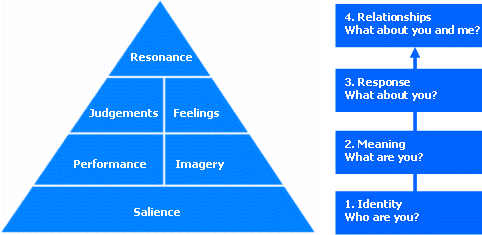Two questions often arise regarding brands: ‘What makes a brand strong?’ and ‘How do you build a strong brand?’ To answer these questions, this section introduces the customer-based brand equity (CBBE) model. This model incorporates theoretical advances and managerial practices in understanding and influencing consumer behaviour. Although useful perspectives concerning brand equity have been put forth, the CBBE model provides a unique point of view as to what brand equity is and how it should be built, measured and managed. The Customer-Based Brand Equity model approaches brand equity from the perspective of the consumer — whether this be an individual or an organization. Understanding the needs and wants of consumers and organizations and devising products and campaigns to satisfy them are at the heart of successful marketing. In particular, two fundamental questions faced by marketers are: ‘What do different brands mean to consumers?’ and ‘How does the brand knowledge of consumers affect their response to marketing activity?’

The basic premise of the Customer-Based Brand Equity model is that the power of a brand lies in what customers have learned, felt, seen and heard about the brand as a result of their experiences. In other words, the power of a brand lies in what resides in the minds of customers. The challenge for marketers in building a strong brand is ensuring that customers have the right type of experiences with products and services and their accompanying marketing campaigns so that the desired thoughts, feelings, images, beliefs, perceptions and opinions become linked to the brand. Customer-Based Brand Equity is defined as the differential effect that brand knowledge has on consumer response to the marketing of that brand. A brand is said to have positive customer-based brand equity when consumers react more favorably to a product and the way it is marketed when the brand is identified than when it is not (eg, when the product is attributed to a fictitious name or is unnamed). Thus, a brand with positive customer-based brand equity might result in consumers being more accepting of a brand extension, less sensitive to price increases and withdrawal of advertising support or more willing to seek the brand in a new distribution channel. On the other hand, a brand is said to have negative customer-based brand equity if consumers react less favorably to marketing activity for the brand compared with an unnamed or fictitiously named version of the product.
There are three ingredients to this definition:
- differential effect;
- brand knowledge;
- consumer response to marketing.
First, brand equity arises from differences in consumer response. If no differences occur, then the brand name product is essentially a commodity. Competition, most likely, would then be based on price. Second, these differences in response are a result of consumers’ knowledge and experience of the brand. Thus, although strongly influenced by the marketing activity of the firm, brand equity ultimately depends on what resides in the minds of consumers. Third, the differential response by consumers that makes up the brand equity is reflected in perceptions, preferences and behavior related to all aspects of the marketing (eg, choice of a brand, recall of copy points from an ad, actions in response to a sales promotion or evaluations of a proposed brand extension). The simplest way to illustrate what is meant by customer-based brand equity is to consider some typical results of product sampling or comparison tests. For example, with blind taste tests, one group of consumers samples a product without knowing which brand it is, whereas another group samples the product knowing which brand it is. Invariably, differences arise in the opinions of the two groups even though they are consuming the same product.
External Links about Customer-Based Brand Equity:
- Keller’s Brand Equity Model (Mind Tools)